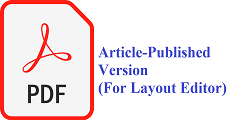Penyuluhan Manfaat Belimbing Wuluh (Averrhoa bilimbi Linn.) sebagai Tanaman Kesehatan di Kelurahan Kebun Bunga, Kecamatan Sukarami, Palembang
DOI:
https://doi.org/10.32663/abdihaz.v2i2.910Keywords:
Participatory, Health, PublicAbstract
Counseling about the Benefits of Averrhoa bilimbi Linn. as a Health Plant in Kebun Bunga Sub-district, Sukarami District, Palembang
Averrhoa blimbi Linn. contains tannins, flavonoids, alkaloids, saponins, potassium, citric acid, and glycosides. These compounds can be used to increase the body's immunity to avoid disease. This community service aims to provide understanding to the community in improving public health independently. Residents can find out the benefits of Averrhoa blimbi Linn. as a healthy plant. This community service activity uses a participatory method. Extension to the community affects the ability and behavior of the community. It increased the community's active role in utilizing the starfruit plant for health so that it has an impact on improving public health.




